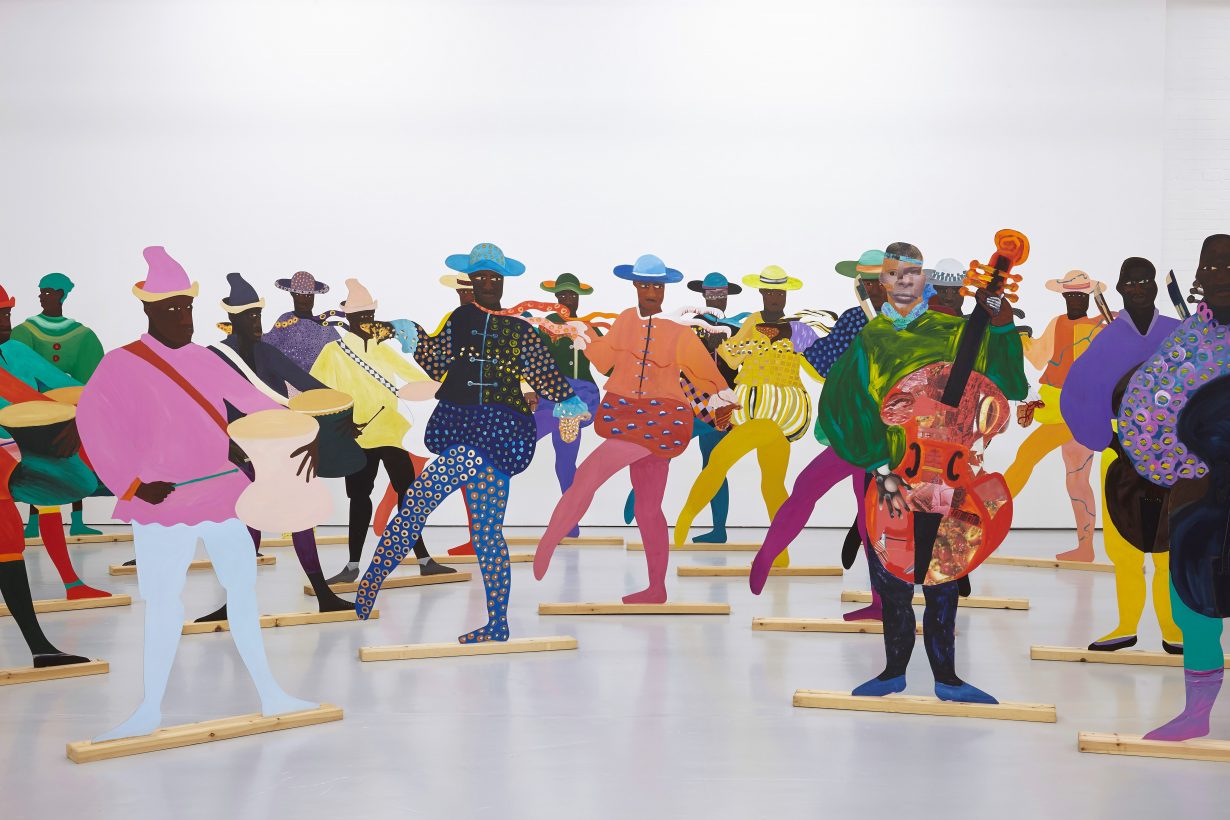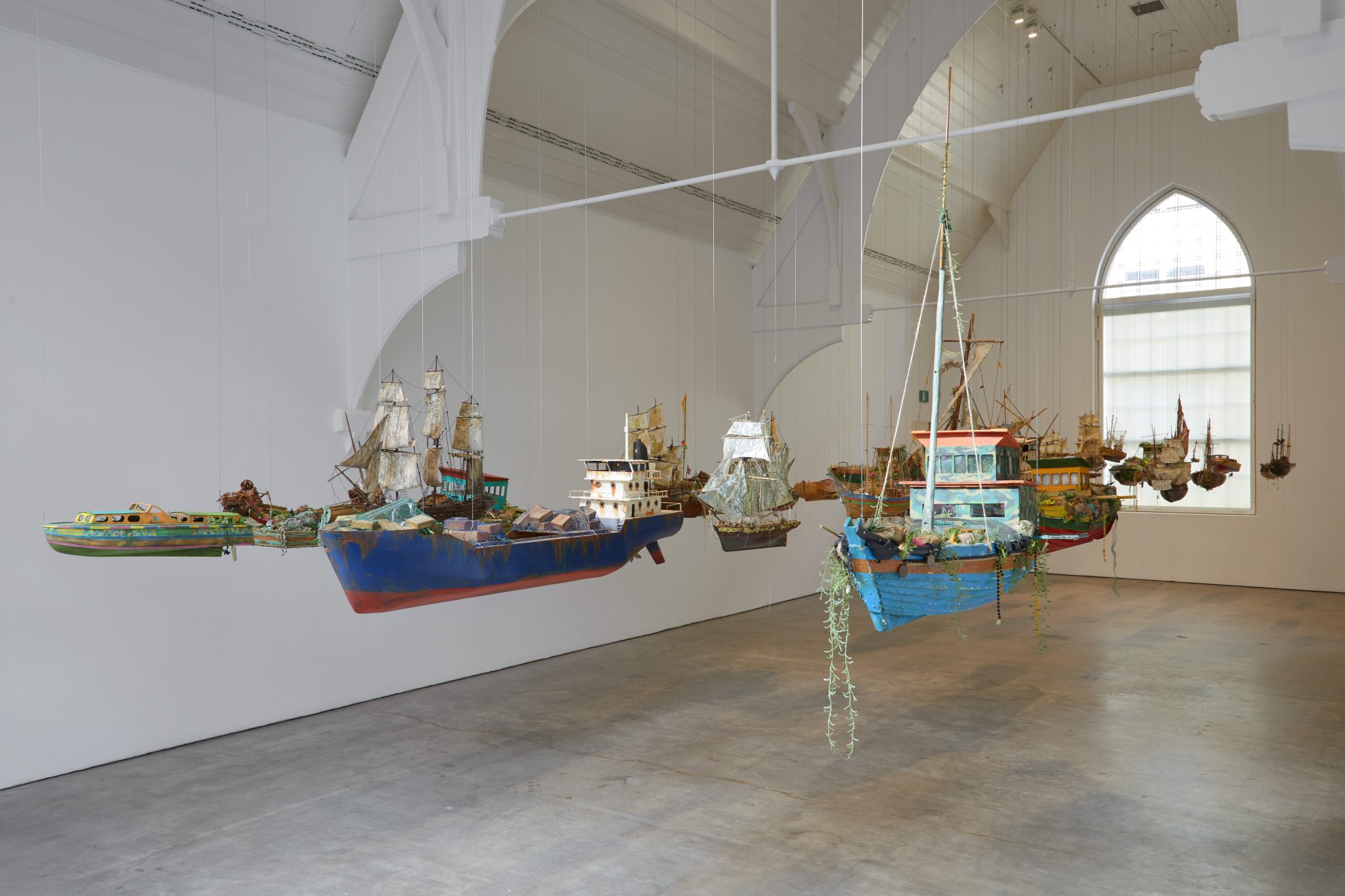‘Entangled Pasts, 1768–now’ and the exhibition history the RA hopes to be part of
It took 237 years out of the Royal Academy’s 250-year existence to elect a Black British Royal Academician. It also took 250 years for the RA to join the public conversation about colonialism and its relationship to art, even though some of the institution’s founding artists worked during the transatlantic slave trade, the abolitionist movement and Britain’s expansion as the most dominant colonial power in the eighteenth century. The discourse at the RA on the relationship between art and colonialism, from the RA’s Collections Decolonial Research Project to the new exhibition Entangled Pasts, 1768–Now: Art, Colonialism and Change, exposes the double consciousness whereby British cultural institutions profess to internally reckon and uncover their relationship to colonial history, while still benefiting financially and culturally from coloniality.
So-called anti-racist rhetoric is in trend. It escalated after a Black man, George Floyd, was brutally killed in the US in 2020, reigniting a global interest in the Black Lives Matter movement. In cultural institutions, part of the response has seen internal investigations and reports offering damning information on the institution itself. For example, the RA and the Walker Art Gallery in Liverpool have undertaken investigations aided by the Centre for the Study of the Legacies of British Slave-ownership database at University College London. The Fitzwilliam Museum in Cambridge’s Black Atlantic exhibition, which closed 7 January 2024, came after academic peer-reviewed research led by The Advisory Group on the Legacies of Enslavement, which began uncovering the University of Cambridge’s deep involvement with systems built on the exploitation of enslaved people. To do this work in the late 2010s and early 2020s and join a discourse that has developed in Britain for over four decades is inexcusably tardy. RA director Axel Rüger and artists (and Royal Academicians) Hew Locke and Isaac Julien have all individually expressed their thoughts to me about how the exhibition aims to ‘catch up’ with the current discourse.
Of the many examples that precede Entangled Pasts, Tate Britain’s 2015 exhibition Artist and Empire showcased artworks by Joshua Reynolds, the first president of the Royal Academy, and his contemporary George Stubbs, alongside newer works by Locke and Sonia Boyce, both of whom are included in the RA show, which also has historical works by Reynolds, J. M. W. Turner and John Singleton Copley. But Artist and Empire also followed a 40-year history of such exhibitions in Britain, such as the 1983 show The Pan-Afrikan Connection at the Midland Group, Nottingham, organised as part of an artist-led series. Numerous iterations of this exhibition across the UK in the 1980s featured works by the Blk Art Group expressing ‘solidarity with the struggles of all oppressed peoples of the world; be they in Africa, the Third World in general or the ghettoes of the capitalist West’ as expressed in the exhibition catalogue. In 1989, The Other Story: Afro-Asian Artists in Post-War Britain was guest curated by the artist Rasheed Araeen at the Hayward Gallery. Araeen’s project was an attempt to address Britain’s colonial and post-colonial history, given the racism, inequality and cultural ignorance that prevailed in British society during the Thatcher era. Building on this history, the RA’s press materials state Entangled Pasts hopes to pave the way for the future.
Curated by Dorothy Price with Cora Gilroy-Ware and Esther Chadwick, Entangled Pasts promises much. The exhibition showcases 100 historical and contemporary works spanning from the eighteenth to the twenty-first centuries. Yet, the exhibition quickly becomes a microcosm of the worlds – depicted or imagined – within the artworks on display, which raises an interesting question: what can art teach us about curating? Thematic exhibitions aren’t always at service to the works, asking the art to lead the way. Instead it is common for displays exploring ‘colonialism’ or ‘Black art’, for example, to propose overarching themes for the works into which the specificity of each selected work is dulled. The curators of Entangled Pasts acknowledge the process of ‘entangling’ in the artistic production of the contemporary works within the show as a curatorial tool and not just a making tool. Works in the exhibition are operative rather than illustrative. For it is the art in the show that strategically employs cultural theorist Stuart Hall’s idea of ‘conjuncture’ – a clustered constellation of social, political, economic and ideological contradictions that gives a distinctive shape to a ‘moment’ in time – and then turns it into a leitmotif in the exhibition. Since Hall first coined the phrase in 2010, his conjunctural analysis has also become a curatorial method, a part of the artist’s toolbox, a practice, a thematic and a verb.

Entangled Pasts includes artists whose work explores conjuncture, examining the entanglements of multiple pasts and presents, both real and fictional. Locke’s installation Armada (2017–19) thus becomes a central contribution to the show. 45 small handmade model boats are suspended in the middle of the gallery: old steamers with United Nations badges ghostly and in stasis as though bracing for invasion; models include boats like La Santa María, the Mayflower and the HMT Empire Windrush. In a conversation, Locke tells me that the title of Armada reflects the dread of incursion from another entity. But I thought to myself that maybe these spectral vessels are afraid of sinking. Dead weight, they are an empty ‘floating history’, as Locke puts it, that carries a burden and brings to the fore the insidious nature of the word ‘deadweight’, from chattel slavery in British colonial times to the refugee crisis in the Mediterranean.
Each boat offers specific junctures. However, Armada has enough breadth to bring into dialogue interdependent yet temporally disparate events within and outside the installation’s distinct historical contexts. To my eyes, these conjunctures become intimately entangled and nearly indistinguishable. We could be transported to 1620 when the Mayflower arrived from across the Atlantic, or land in 1966 for Guyana’s independence from British colonial rule, a juncture connected to the ‘Rasta colours’ that Locke warmly recollects from his childhood. Let’s now peer our heads closer to the boats. Windows are blotted out as if they got milled. Abrased parts allude to total corrosion, as though they belong to the shipwrecked Spanish galleon San José of 1708. Barriers in the gallery space prevent us from staring down the holes into darker spaces, deeper time – Armada’s insides, its physical and psychical depth. Armada holds so many emotionally ambivalent moments on a piece of string.
Locke says the question that haunted him about Armada was ‘Where are you going?’ and adds, ‘the galleons are not just suspended; they are all heading in one direction, but where?’ The questions the work raises around configuration and direction are critical stakes in curating: what it means to make an art historical intervention through organising objects in spaces. I also wonder what happens after we leave the exhibition. Art lingers. Artworks like Armada can create an awareness about the ongoing impact of coloniality on our daily lives. Awareness of history’s conflicting and divergent ‘truths’ could make us less trapped in disfigured histories. Unlike Armada, we can move forward.
Jade Foster is a curator and art historian based in Nottingham.
